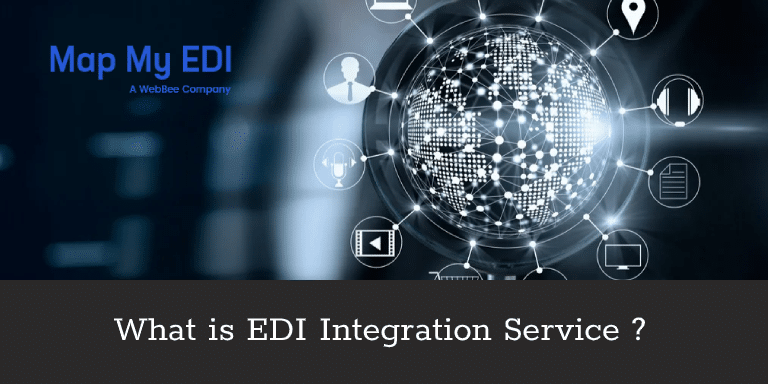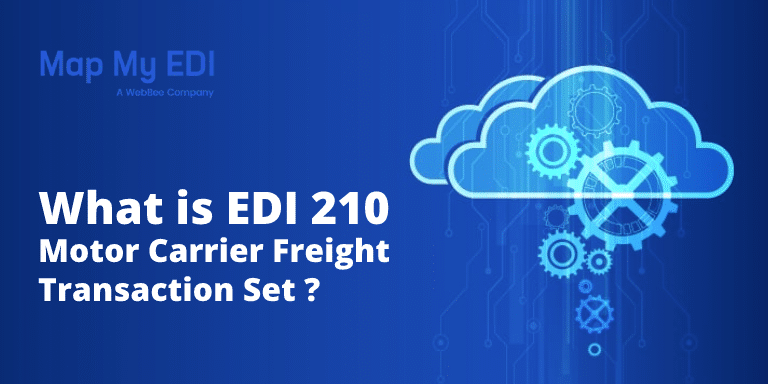How EDI Integration is Helpful for the Organizations?
EDI integration can be defined as the process of laying down a complete EDI workflow between trading partners. In a convoluted business environment, modern businesses are facing new problems every day and so they require new solutions. So, there is a need for EDI integration as it automates the manual traditional process of exchanging business documents between trading partners. EDI integration performs the three-stage process of reviewing, analyzing and confirming the required EDI information. The effective EDI integration solutions and tools help in delivering promising automation rewards for companies that use EDI for crucial B2B transactions.
EDI integrations cover numerous key elements, which includes-Trading partners, Endpoints, EDI documents and transactions, EDI standards and EDI protocols.
For effective EDI integrations, the basic element is trading partners, as it explains out with whom you are exchanging business documents by using EDI. Endpoints imply which IT systems documents have to be sent, receive and process EDI data. EDI documents and transactions explain the specific type of documents or messages that needs to be exchanged with trading partners. EDI standards denote the type of EDI format used for messages or documents to be exchanged. EDI protocols explain which types of technologies are used for transmitting messages.
For setting up EDI workflows, users have to define all these elements and then set up a system by using the best EDI technology or software for the desired workflow.
Advantages of ERP EDI Integration
EDI integration helps in maximizing the advantage of EDI. It is because it eliminates the manual data entry which is often used to move data back and forth between your EDI and back-office system.
- It enhances visibility across your organization
By using EDI integrations, users can manage all their trading partner transactions from their ERP (Enterprise Resource Planning) system. It helps in gaining real-time visibility overall trading partner messages rather than visiting or logging into their individual web portals.
- Eliminating manual processes from your supply chain
EDI integrations help in automating the flow of messages between your ERP and EDI solution. It enables users to reorganize and redistribute valuable resources into more strategic areas of their business and eliminates incorrect or flawed data caused by human errors.
- Improvises customer care
EDI integrations highlight and strengthen message automation with strict business rules and advanced error checking. Thus, it improvises message accuracy and makes sure that users don’t miss a trading deadline.
How does EDI integration work?
EDI integrations help in interpreting and converting business documents from one organization into universal standards. It successfully transmits them to other partners and mapping them into working business documents for their partners in their technical terms and tools.
The workflow of the organization is optimized through EDI as it replaces previous order processes like email, fax or mail, and electronically exchanges documents between two companies with different business systems. EDI makes use of the standard of data (ANSI or EDIFACT) to make sure that requests from one party are well-matched with the supplier’s information system. Thus, it will help suppliers in fulfilling the placed orders. In this way, EDI integrations help companies in doing business with each other.
What are some EDI integration challenges?
While implementing EDI integrations, there are possibilities that you might face many challenges. In EDI integrations, users have to transfer files and translate, build and parse EDI documents and integrate these documents with back-end applications like ERP, CRM or accounting systems.
As it deals with many complex end-to-end processes, there are probabilities that anything can go wrong. There are some of the challenges that are generally encountered during EDI integration projects and they are: –
- Weak Integrations
Generally speaking, there are few organizations that build integrations that are not standardized. Now, if these customized integrations are highly independent of each other to support a particular process and are not properly tested then the code can become weak. The applications do not react well to updates and changes and it becomes costly to modify them. By using standard code or API-driven micro-services, users can get testable and reusable components that make their integrations less weak and more dependable.
- Restricted Capabilities
At times, during EDI integration, some unexpected or unforeseen issues occur. It is important to have a flexible platform that supports customizations that allows you to make adjustments immediately to control specific business processes. So, it is advisable to look for an agile platform that enables you to customize your integrations. - Deficient of Internal Expertise
The lack of internal expertise is one of the biggest problems encountered with EDI integrations. It happens when an organization depends completely on a service provider and has no ownership of the integration project. If any problem arises then they are totally dependent on the service providers. Therefore, to address these challenges, companies should have internal expertise so that they can comprehensively understand the integration process, troubleshoot problems and can make optimum adjustments. - Usage of Manual Processing
In many companies, EDI integration processes are not fully integrated and so manual processes are required for related workflows. There are few companies that still use Web EDI, with their trading partners, where they view all their purchase orders. While acknowledging or replying to any particular order, they have to manually fill out a form to enter shipping/fulfillment information. It leaves many possibilities of human errors. Therefore, it is highly advised to have a fully integrated end-to-end process where there is no need for manual data entry. It will not only accelerate workflows but will eliminate any possibilities of errors and will be cost-effective. - Having Multiple Applications and Multiple Integration Solutions
In an organization, there are different teams that use different applications such as ERP/Warehousing, databases, CRM, and Accounting, for storing information from these applications and more. It is expected that each team will build customized and isolated integrations for their processes. There is the possibility that companies may use different solutions for each of these EDI integration processes. The troubleshooting of any problem can also be very difficult as developers might search for different solutions for the source of the problem. Therefore, it is important to have a single integration solution for all integration processes and applications that can speed up the learning curve. It will further reduce the time required to create a new integration. It will make sure that the process is repeatable and reusable and will simplify the troubleshooting of problems.
In case If you are looking for the best EDI Consultant Company for edi integrations then, you can visit our website with your project details. Our team of experts will assist you to get the best outcomes of your plan to acclaim a high rank amongst your competitors!!!





